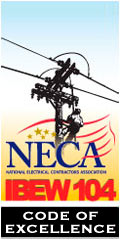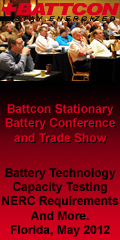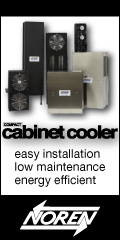
| Past Issues/Subscribe | Employment | neppa.org | Legislative Update | Advertise | May 2012 |

How Many Groundmen?
"If two or more lineworkers are in the primary zone, how many groundmen are we required to have on the job?" This was a question that was posed to me recently at the NEPPA Apprentice Lineworker School. Apparently there has been some question as to what the OSHA requirements are in this situation. OSHA 1910.269(L)(1)(i) states: Except as provided in paragraph (L)(1)(ii) of this section, at least two employees shall be present while the following types of work are being performed: (L)(1)(i)(A): Installation, removal or repair of lines that are energized at more than 600 volts. (L)(1)(i)(B): Installation, removal or repair of deenergized lines if an employee is exposed to contact with other parts energized at more than 600 volts. (L)(1)(i)(C): Installation, removal or repair of equipment, such as transformers, capacitors and regulators, if an employee is exposed to contact with parts energized at more than 600 volts. (L)(1)(i)(D): Work involving the use of mechanical equipment, other than insulated aerial lifts, near energized parts energized at more than 600 volts. (L)(1)(i)(E): Other work that exposes an employee to electrical hazards greater than or equal to those posed by operations that are specifically listed in paragraphs (L)(1)(i)(A) through (L)(1)(i)(D) of this section. OSHA 1910.269(L)(1) requires a second qualified worker (safety watch) to be present at the job site whenever a worker is within the minimum approach distance and is working on lines or equipment energized at 600 volts or higher. The safety watch must be trained in first aid and CPR and has some specific and very important duties he/she must perform: 1. He/she must be in a position to carefully watch the movement of the worker while he/she is within the minimum approach distance. 2. He/she must be ready to give a warning if the worker being observed is about to perform an unsafe act or about to inadvertently contact an energized conductor or part. 3. He/she must provide a rescue if the worker is injured. OSHA does not specify how many workers a safety watch observer can oversee. It is not uncommon for the safety watch to observe from the ground below two or more workers in separate buckets working together but only if he/she can fully comply with all three requirements for each worker. The safety watch can be in a bucket, on the pole or on the ground as long as he/she can fulfill the requirements listed above. However, he/she cannot leave his/her position to get material or do any other work while any of the workers being observed is within the minimum approach distance. Assuming one safety watch is observing two or more workers, the question arises "If two or more workers are injured simultaneously, how I do determine who to rescue first?" To be put in a position to choose between two or more injured coworkers would be difficult indeed. However, to my knowledge, OSHA does not address this situation at this time. As with any performance standard, it is up to the utility to decide how to comply with this regulation. Often time’s manpower or the lack thereof determines the size of work crews. May we always keep in mind that the OSHA regulations are the minimum standard that we must follow. |




